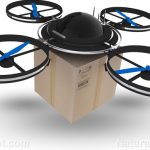
Scientists developing laser robot that can zap weeds without using pesticides
Friday, June 16, 2017 by Russel Davis
http://www.futuresciencenews.com/2017-06-16-scientists-developing-laser-robot-that-can-zap-weeds-without-using-pesticides.html

A team of researchers from the Institute of Geodesy and Geoinformation at the University of Bonn in Germany are currently developing a robotic tool that readily identifies weeds and shoots laser to eliminate them, thus reducing the need to use herbicides. The project received an EXIST Business Start-up Grant from the Federal Ministry for Economic Affairs and Energy.
The robotic system is slated to use deep learning algorithms to carry out the weeding task. The researchers also look into the possibility that the system might require cameras mounted on an all-terrain robot vehicle to do the weeding. The system might also serve as an add-on equipment to tractors for the same reason. According to researcher Dr. Julio Pastrana, the robotic system will shoot the leaves of unwanted weeds with short laser pulses, which in turn will weaken their vitality. Using the robotic system may potentially reduce the need for herbicides on fields, thus protecting the environment, said researcher Tim Wigbels.
The researchers are currently working on the specifics of their robotic system, and are also moving to establish their startup business Escarda Technologies for one year at the university through the EXIST grant. “It is now a case of finding investors and further developing the business plan for the start-up,” Wigbels noted in Science Daily. Both researchers look into participating in the start-up round tables carried out by Technology Transfer. “Our aim is to contribute to achieving more sustainable agriculture,” Pastrana quoted in United Press International. The laser-blasting technology may have legitimate commercial potential, said transfer advisor Rüdiger Wolf.
Potential implications in herbicide use
The development of the new robotic system may have positive implications in herbicide use around the world, which has shown significant growth over the years. In fact, a study published in 2015 revealed that the U.S. has already applied a whopping 1.6 billion kilograms of the herbicide glyphosate since 1974. This accounted for 19 percent of estimated global glyphosate use.
According to the study, two-thirds of the total glyphosate volume applied in the U.S. between 1974 and 2014 has been used during the past decade alone. This accounted for 72 percent of the global glyphosate use. The researchers also found that in 2014 alone, farmers used enough glyphosate to apply 1.0 kg/ha on every hectare of cultivated cropland across the U.S. and nearly 0.53 kg/ha on all cropland around the world. (Related: Glyphosate contamination might be apparent in food too)
In addition, the study showed that the global glyphosate use showed a 15-fold increase since 1996, around the same time when genetically engineered, glyphosate-tolerant crops were introduced.
“Genetically engineered herbicide-tolerant crops now account for about 56 percent of global glyphosate use. In the U.S., no pesticide has come remotely close to such intensive and widespread use. This is likely the case globally, but published global pesticide use data are sparse. Glyphosate will likely remain the most widely applied pesticide worldwide for years to come, and interest will grow in quantifying ecological and human health impacts. Accurate, accessible time-series data on glyphosate use will accelerate research progress,” the researchers concluded in Environmental Sciences Europe.
Follow more discoveries on technology and food production at FutureScienceNews.com.
Sources include:
Tagged Under: Tags: environment, herbicide, robotics, weed killer, weeds





